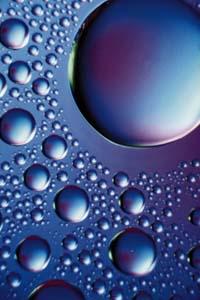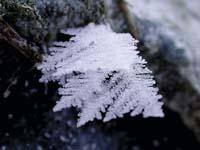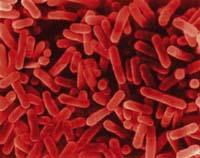When the sound becomes light

It was an unexpected discovery, like many others. Two scientists sought to investigate the sonar and, in an experiment, a liquid filled container was subjected to an ultrasound transmitter. They saw small bubbles in the liquid and when the ultrasound transmitter was launched they saw that the bubbles emitted light, pulses of light. That was not what they wanted to get, but it was the first time that the sonoluminescence was seen and described. This same phenomenon was seen in 1933 in N. Marinesco and J.J. Trillat in his experiments. The two scientists at l'Académies des Sciences in Paris showed that the photos were darkened with water and applying ultrasound. Sonoluminescence was observed in those experiments.
Fifty years later, in 1989, Professor of Mississippi University, Lawrence Crum, and his doctorate, Felipe Gaitán, took a big step in sonoluminescence. Experimentally they managed to induce the sonoluminescence of a single bubble. This allowed them to constantly observe the phenomenon in a single stable bubble without interaction. It was then when they realized that the bubble to emit light should have a very high interior temperature, enough to melt the steel, hence the interest for the sonoluminescence.
Fundamentals of sonoluminescence

Sonoluminescence is based on a sound wave. An air bubble inside a liquid is contracted and expanded according to the pressure exerted by the sound wave. In fact, bubbles emit light when they suffer the highest level of pressure. At that time its diameter is very small, about a micrometer.
As for the intensity of the light emitted, there is still an unexplained curiosity: if a small amount of noble gas is added to the water tank, the intensity of the light increases considerably. Scientists do not know why, but that is what happens.
The wavelength of light emitted by the bubble is very small, and scientists believe that the spectrum of this light can reach the ultraviolet. On the contrary, the frequency is usually very high and stable, unless the frequency of the ultrasound source varies.
Both parameters, frequency and wavelength, are inversely proportional. In addition, when the wavelength is small, the light has more energy. Therefore, experts say that the temperature inside the bubble ranges between 10,000 and one million kelvin, that is, between 9.727 °C and 999.727 °C.

There are scientists who say they have done it. Recently R. P. P. Scientist Taleyarkhan achieved the fusion of deuterium with this method, as he published in several places (2002-2005). Deuterium is an isotope of hydrogen. It has a proton and a neutron in the nucleus and an electron spinning around. Taleyarkhan introduced deuterium in a deposit and bombed the air bubbles with sound waves. If there were fusion, two deuterium would be collected and helium would be created. As Taleyarkhan pointed out, he succeeded, but these experiments could not be repeated or demonstrated outside his laboratory, so their results are questioned.
No comments yet
Regardless of whether the fusion has been achieved or not, the sonoluminescence mechanisms are also not clear. Many believe that bubbles cannot maintain their spherical form at such high pressures, which causes sonoluminescence. Many others place extremely hot spots at the center of the light emission, as well as collisions in the liquid, emissions from the outer crown of the bubble, etc. However, everyone accepts that the emission of light has to do with the sudden contraction that the bubble suffers from pressure effect.

However, there are two theories that have been widely discussed and at the same time extended on sonoluminescence.
According to the physicist of the University of Sussex, Claudia Eberlein, light is produced by the emptiness surrounding the bubble. The physical compares this phenomenon with the light that occurs around black holes. According to quantum theory, the vacuum is filled with virtual particles, but the rapid movements between water and air convert these virtual photons into real photons. The pulses of light would be the photons emitted by the vacuum that surrounds the bubbles. However, this theory has the opposite proof that the properties of light vary with the introduction of noble gases in the water tank, which should not happen if light occurs.
The second theory argues that fast liquid jets that cross the bubble produce light at a speed of 6,000 kilometers per hour. This theory was published by Professor Andrea Prosperetti of Johns Hopkins University. The icy water can emit light when it is broken and, according to this theory, the high pressures inside the bubble generate structures in the form of ice. When the liquid jets cross the bubble, these structures in the form of ice break causing the emission of photons.
According to Prosperetti, the introduction of noble gases modifies the alignment of water molecules in these structures in the form of ice: defects in the crystal structure occur and the breakage is facilitated. To prove that this theory is true, it would be enough to bombard the bubbles directly with a quick stream of water in a container without sound. That is to be seen.

Actual applications
However, despite the lack of knowledge of the sonoluminescence mechanisms, several applications have already been investigated. For example, Japanese researchers have used sonoluminescence to increase the influence of the TiO 2 catalyst, used to purify water. Other researchers use it to identify and quantify metals. NASA also has a study on the application of sonoluminescence for the manufacture of lighter and safer space vehicles. In fact, they want to use it for instrumentation and measurements.
Recently we have known the latest application of the hand of the technological center Inasmet. Sonoluminescence will be used against the bacterium Legionella. And how? Well, in the cooling ducts of any building there is water, where the bacteria Legionella and other microorganisms grow. By introducing air bubbles in these pipes and the emission of ultrasound is intended to clean the pipes.

On the one hand, around the bubbles are generated enormous pressures and temperatures that will cause the death of the Legionella bacteria that are on the way. On the other hand, oxidation processes will be promoted in the cooling water circuit. This oxidant stress prevents the creation of a vital support for microorganisms (biofilm), so neither Legionella nor other microorganisms can be installed in cooling water circuits.
The application has, therefore, had sonoluminescence. But the biggest interest, of course, is in the possibility of getting a controlled fusion. To achieve this, however, there is a long way to go.





